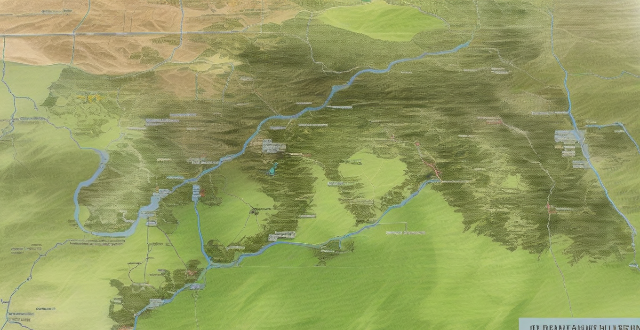Effective strategies for community climate adaptation include risk assessment and planning, infrastructure upgrades, sustainable land use practices, and education and awareness. These strategies aim to reduce vulnerability and enhance resilience to the impacts of climate change.

Effective Strategies for Community Climate Adaptation
Climate adaptation refers to the process of adjusting to the expected changes in climate conditions. It is a proactive approach that aims to reduce the vulnerability of communities and enhance their resilience to the impacts of climate change. Here are some effective strategies for community climate adaptation:
1. Risk Assessment and Planning
The first step in climate adaptation is to assess the risks associated with climate change and develop a plan to address them. This involves identifying the potential impacts of climate change on the community, evaluating the vulnerability of different sectors, and developing adaptation measures to minimize the risks.
Key Points:
- Conduct a comprehensive risk assessment to identify the potential impacts of climate change on the community.
- Develop a climate adaptation plan that outlines the measures needed to reduce vulnerability and enhance resilience.
- Involve local stakeholders in the planning process to ensure that the plan addresses their needs and priorities.
2. Infrastructure Upgrades
Upgrading infrastructure is essential for reducing the vulnerability of communities to climate change impacts. This includes improving drainage systems, reinforcing coastal defenses, and retrofitting buildings to withstand extreme weather events.
Key Points:
- Invest in infrastructure upgrades that can withstand the impacts of climate change, such as improved drainage systems and coastal defenses.
- Retrofit buildings to make them more resilient to extreme weather events, such as floods and hurricanes.
- Encourage the use of green infrastructure, such as rain gardens and permeable pavement, to manage stormwater runoff and reduce flooding risks.
3. Sustainable Land Use Practices
Sustainable land use practices can help reduce the vulnerability of communities to climate change by preserving natural ecosystems and promoting sustainable agriculture. This includes protecting wetlands, reforestation, and promoting sustainable farming practices.
Key Points:
- Protect and restore natural ecosystems, such as wetlands and forests, which provide important services like flood control and carbon sequestration.
- Promote sustainable agriculture practices that reduce greenhouse gas emissions and increase soil health, such as crop rotation and cover cropping.
- Encourage the use of renewable energy sources, such as solar and wind power, to reduce reliance on fossil fuels and mitigate climate change.
4. Education and Awareness
Education and awareness are critical components of climate adaptation. By raising awareness about climate change and its impacts, communities can better understand the need for adaptation measures and become more engaged in the process.
Key Points:
- Educate community members about climate change and its potential impacts on their lives and livelihoods.
- Encourage community participation in climate adaptation initiatives, such as tree planting or beach cleanups.
- Foster a culture of sustainability within the community by promoting eco-friendly behaviors and lifestyle choices.
In conclusion, effective strategies for community climate adaptation include risk assessment and planning, infrastructure upgrades, sustainable land use practices, and education and awareness. By implementing these strategies, communities can reduce their vulnerability to climate change and build resilience for a more sustainable future.